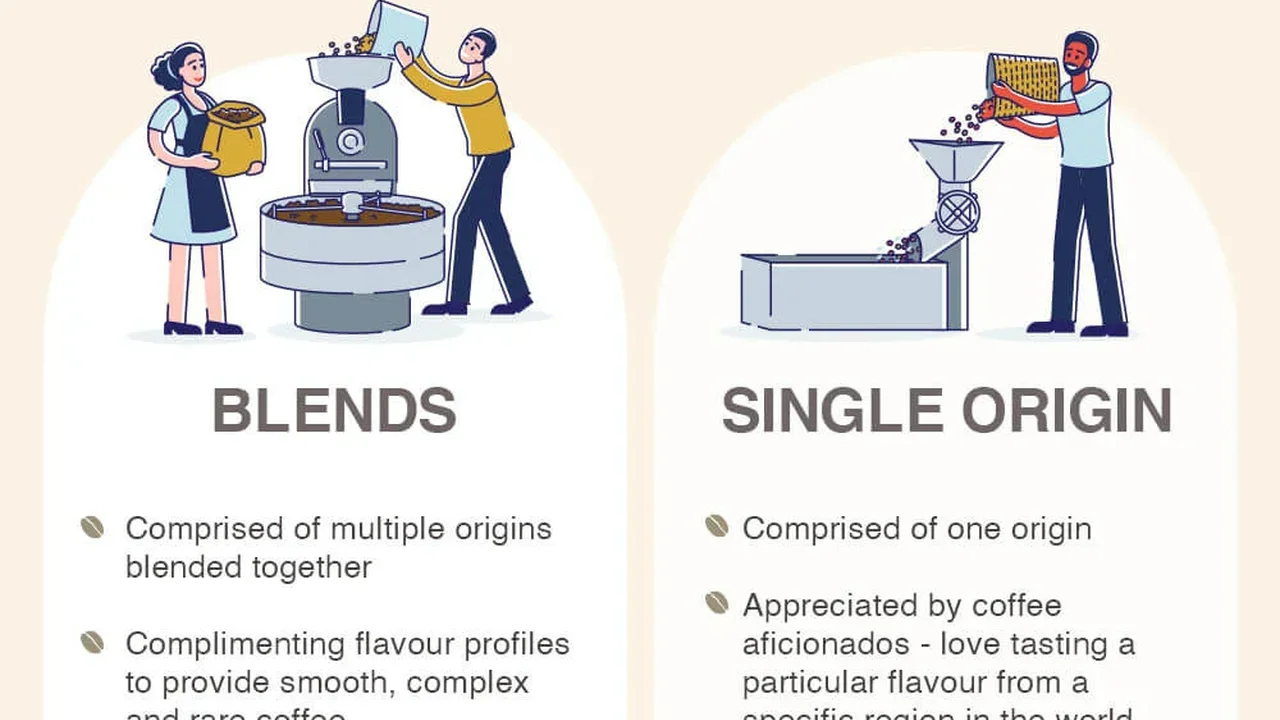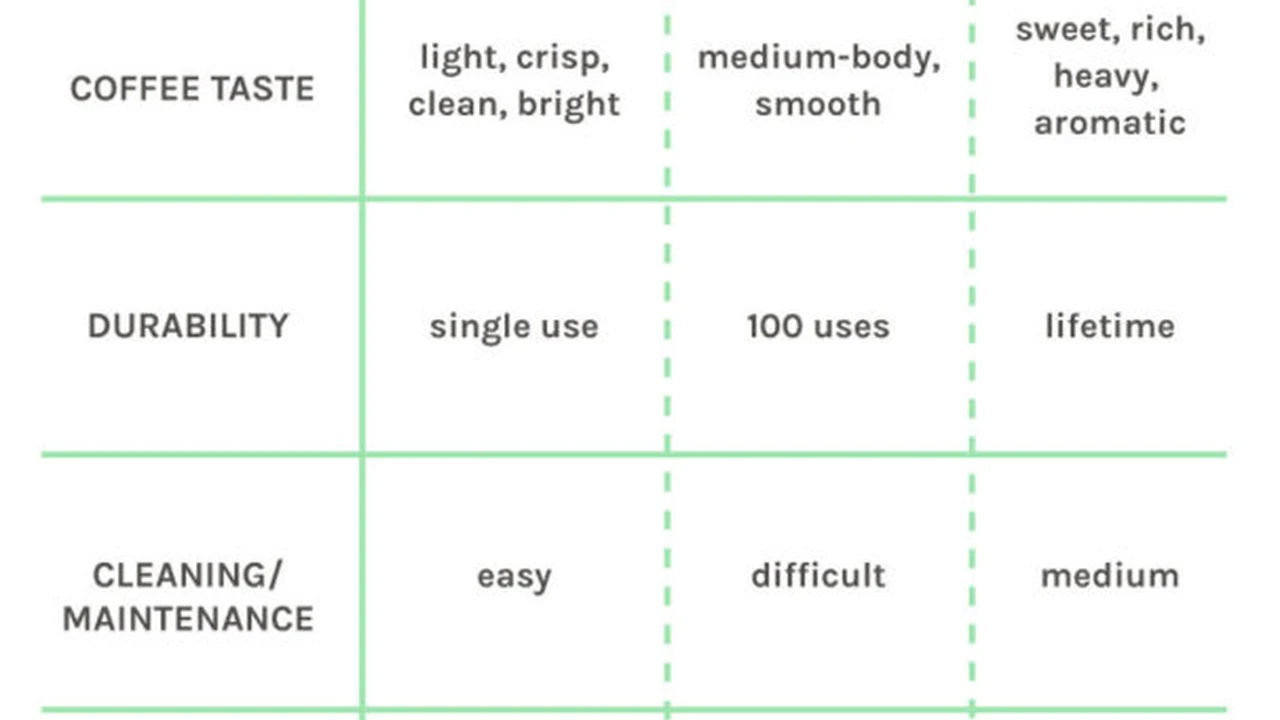Single Origin Coffee vs. Blends: What to Choose?
Coffee pod machines offer convenience, but how does the coffee quality compare? We weigh the pros and cons of pod machines, considering ease of use, cost, and environmental impact. Make an informed decision.

The Allure of Coffee Pod Machines: Quick and Easy Coffee Brewing
Let’s face it, mornings are hectic. Who has time to grind beans, measure coffee, and fuss with a complicated brewing process before they've even fully woken up? That's where coffee pod machines come in. They promise a quick, easy, and relatively mess-free way to get your caffeine fix. Just pop in a pod, press a button, and you're good to go. But is this convenience worth sacrificing the quality of your coffee?
Coffee Quality Showdown: Freshly Ground Beans vs Pre-packaged Coffee Pods
The biggest argument against coffee pod machines is the quality of the coffee itself. Freshly ground beans, brewed immediately, offer a depth of flavor and aroma that's hard to replicate. Coffee pods, on the other hand, contain pre-ground coffee that has been sitting for an unknown amount of time. This can lead to a loss of volatile oils, resulting in a flatter, less nuanced cup of coffee.
Think of it like this: would you rather eat a freshly baked loaf of bread or a pre-packaged slice that's been sitting on the shelf for a week? The same principle applies to coffee. Fresh is almost always better.
Cost Considerations: Are Coffee Pod Machines More Expensive in the Long Run?
While the initial investment in a coffee pod machine might seem relatively low, the cost of the pods themselves can quickly add up. Compared to buying whole beans and grinding them yourself, coffee pods are significantly more expensive per cup. Over time, this can make coffee pod machines a less economical option for regular coffee drinkers.
Let's do some rough math. A bag of decent quality whole beans might cost $15 and yield about 30 cups of coffee. That's $0.50 per cup. Coffee pods, on average, cost around $0.70 to $1.00 per pod. Multiply that by your daily coffee consumption, and you'll see how quickly the costs can escalate.
Environmental Impact: The Problem with Coffee Pod Waste
Another major concern with coffee pod machines is their environmental impact. Most coffee pods are made of plastic or aluminum, which are not easily biodegradable. This means that they end up in landfills, contributing to plastic pollution. While some companies offer recyclable or compostable pods, these are often more expensive and not always readily available.
Consider the sheer volume of coffee pods that are discarded every day. It's a staggering amount of waste that can have a significant impact on the environment. If you're environmentally conscious, you might want to consider a more sustainable brewing method.
Weighing the Pros and Cons: Is a Coffee Pod Machine Right for You?
So, is a coffee pod machine the right choice for you? It really depends on your priorities. If convenience is your top concern and you're willing to sacrifice some coffee quality and pay a premium for it, then a coffee pod machine might be a good fit. However, if you're a coffee connoisseur who values flavor and aroma above all else, or if you're concerned about cost and environmental impact, you might want to explore other brewing methods.
Top Coffee Pod Machine Recommendations: Exploring Different Brands and Models
If you've decided that a coffee pod machine is right for you, here are a few of the top brands and models to consider:
Nespresso VertuoLine: The King of Coffee Pod Systems
Nespresso is arguably the most well-known coffee pod machine brand, and the VertuoLine is their flagship system. It uses a centrifusion technology to extract coffee, resulting in a richer, more flavorful cup than some other pod machines. The VertuoLine also offers a wide variety of coffee blends and sizes, from espresso to full-sized cups of coffee. Nespresso machines typically range from $150 to $300, depending on the model.
Pros: Wide variety of coffee blends, rich flavor, convenient, relatively easy to clean.
Cons: Expensive pods, proprietary pod system (only Nespresso pods can be used), environmental impact.
Best Use Case: Individuals or small households who want a convenient and flavorful coffee experience without the hassle of grinding beans.
Keurig K-Elite: The Versatile Coffee Pod Machine
Keurig is another popular coffee pod machine brand, known for its versatility and ease of use. The K-Elite is one of their top models, offering multiple brew sizes, a strong brew option, and a hot water dispenser for tea or other beverages. Keurig machines are typically more affordable than Nespresso machines, ranging from $100 to $200.
Pros: Affordable, versatile, easy to use, wide variety of K-Cup pods available (including third-party brands).
Cons: Coffee quality can be inconsistent, environmental impact, can be noisy.
Best Use Case: Households with multiple coffee drinkers who have different preferences, or individuals who want a versatile machine that can brew both coffee and tea.
Lavazza A Modo Mio: An Italian Espresso Experience
If you're looking for an authentic Italian espresso experience, the Lavazza A Modo Mio is a great option. This machine is designed specifically for brewing espresso and uses Lavazza's signature coffee blends. It's a compact and stylish machine that's perfect for small kitchens. Lavazza machines typically range from $100 to $250.
Pros: Authentic Italian espresso, compact design, easy to use.
Cons: Limited to espresso brewing, proprietary pod system (only Lavazza A Modo Mio pods can be used), environmental impact.
Best Use Case: Espresso lovers who want a convenient way to brew authentic Italian espresso at home.
Caffitaly S22: A Multi-Beverage Coffee Pod System
The Caffitaly S22 is a versatile coffee pod system that can brew espresso, coffee, and even tea. It uses a unique capsule system that allows for optimal extraction of flavor and aroma. Caffitaly machines are typically priced in the $150 to $250 range.
Pros: Multi-beverage capabilities, good extraction of flavor and aroma, sleek design.
Cons: Limited availability of capsules compared to Nespresso and Keurig, may require online ordering of pods.
Best Use Case: Individuals or small families who enjoy a variety of beverages and want a single machine to handle all their brewing needs.
Coffee Pod Machine Alternatives: Exploring Other Brewing Methods
If you're not convinced that a coffee pod machine is right for you, there are plenty of other brewing methods to consider. Here are a few of the most popular:
Pour-Over Coffee: The Art of Manual Brewing
Pour-over coffee is a manual brewing method that allows for precise control over the brewing process. It involves pouring hot water over freshly ground coffee beans in a filter, allowing the water to slowly extract the coffee's flavor and aroma. While it requires some practice and attention, pour-over coffee can produce a truly exceptional cup of coffee. A pour-over setup typically costs around $50 to $100.
Pros: Precise control over brewing, excellent coffee quality, relatively inexpensive.
Cons: Requires practice and attention, can be time-consuming.
French Press Coffee: A Full-Bodied Brew
French press coffee is a simple and affordable brewing method that produces a full-bodied cup of coffee with a rich, sediment-filled texture. It involves steeping coarsely ground coffee beans in hot water for a few minutes, then pressing the plunger to separate the coffee from the grounds. A French press typically costs around $20 to $50.
Pros: Simple to use, affordable, produces a full-bodied brew.
Cons: Can be messy, requires coarse ground coffee, coffee can be bitter if over-steeped.
Espresso Machine: The Professional Option
If you're a serious espresso lover, you might want to consider investing in an espresso machine. Espresso machines are more expensive than other brewing methods, but they can produce cafe-quality espresso at home. They require some skill and practice to use, but the results are worth the effort. Espresso machines typically range from $200 to $2000 or more.
Pros: Cafe-quality espresso, allows for customization of brewing parameters.
Cons: Expensive, requires skill and practice to use, can be time-consuming to clean.
Cold Brew Coffee: A Smooth and Low-Acid Option
Cold brew coffee is a brewing method that involves steeping coarsely ground coffee beans in cold water for 12-24 hours. This results in a smooth, low-acid coffee concentrate that can be diluted with water or milk. Cold brew is a great option for those who are sensitive to acidity or who prefer a smoother, less bitter coffee. A cold brew setup typically costs around $20 to $50.
Pros: Smooth and low-acid, easy to make, can be stored for several days.
Cons: Requires a long steeping time, can be weak if not brewed properly.
Making the Decision: Choosing the Right Coffee Brewing Method for Your Lifestyle
Ultimately, the best coffee brewing method for you depends on your individual preferences and lifestyle. Consider your priorities, your budget, and your environmental concerns when making your decision. Whether you choose a coffee pod machine, a pour-over setup, or a French press, the most important thing is to enjoy your coffee!
:max_bytes(150000):strip_icc()/277019-baked-pork-chops-with-cream-of-mushroom-soup-DDMFS-beauty-4x3-BG-7505-5762b731cf30447d9cbbbbbf387beafa.jpg)





